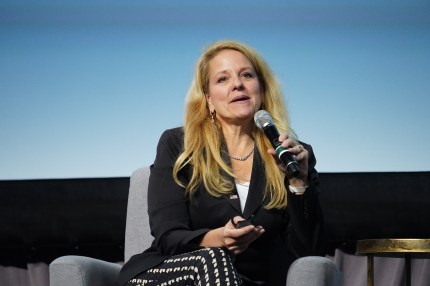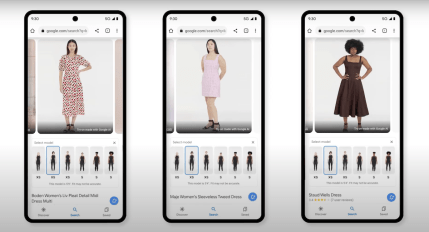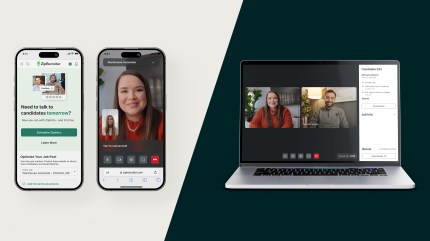Damien Howard
Imagine you have developed a groundbreaking product that is going to revolutionize your industry. You do not want your competitors to copy the product. At the very least, you want them to pay you compensation for making a competing product.
You know that if you want to protect the product, you should file a patent application. So, you hire a patent lawyer and file a U.S. patent application. Problem solved, right? Time to start manufacturing and marketing your product.
But wait, a patent is a national right. A U.S. patent would only stop the manufacture, sale, use or importation of competing products into the U.S. Competitors from other countries will still be able to manufacture and sell competing products outside the U.S.
What can you do to stop competition in other countries? Well, you can file a patent application in each of those countries. However, the cost of filing a patent application in every country can be prohibitive even for the largest companies. Further, your product may not be limited to one invention and may encompass several inventions.
Each of these inventions may need its own patent application, which can quickly multiply the cost to your business and make filing for patent protection prohibitively expensive. Further, differences in the law in some countries can result in you spending significant money for little gain. This does not mean you should give up on patent protection in other countries, but you will want to be judicious in deciding where to foreign file.
This article describes several criteria for helping decide in which countries to seek patent protection. It is important to analyze these criteria and decide whether foreign filing is appropriate before publicly disclosing the invention, as many countries do not allow you to obtain patent protection after the invention has been publicly disclosed.
Where to pursue foreign patent protection
There are several reasons to file for foreign patent protection, including stopping competitors, marketing benefits, manufacturing protection, licensing and inventor location. Foreign filing can be prohibitively expensive, and you should engage in a thorough analysis when devising your filing strategy.
You will want to analyze each of the reasons to foreign file. You should consider whether it makes business sense to file in several countries, in a more tailored list of countries or in a particular country. We will describe the different considerations when preparing a foreign filing program and conclude with examples of how foreign patent protection may be pursued for two different products: a communications chip and a cell phone.
Stop competitors
The primary reason to foreign file is perhaps the most obvious — to prevent competitors from making, using, selling or importing a competing product that encompasses the invention.
When selecting a country to foreign file, a business should consider how likely a competitor is to sell a competing product in that country. For example, consider whether the competitor has previously sold products in that country or how challenging it would be for the competitor to build operations in that country. A related consideration is whether the market in the country is large enough that you care what the competitor does in the country. If the market is small, it may not be worth the cost to file and enforce a patent in that country.
Similarly, if the country is not a market where you are currently selling products, consider the likelihood that you will want to start selling products in that country. If it is possible that you may begin to sell in that country in the future, you may want to file for a patent in that country now, since the public disclosure or sale of your invention may prevent future filings in the country. But if you are unlikely to ever sell in that country, you may elect to not file in the country.
Even if selling products in the country may not be of interest, it is worth considering whether the country is a transit hub for shipping products. If so, it may be possible to stop shipment of competing products through a transit hub country by obtaining patent protection in that country. Common transit hubs include the Netherlands, which has Europe’s largest seaport in Rotterdam, and Singapore, which is an important shipping hub in the Asia-Pacific region.
Lastly, regardless of whether the market is one where you or your competitors might sell products, is the country one where you are likely to enforce your patent? In some countries, enforcing the patent may not be economical, or it may not be possible to get an injunction to stop the competitor. If the likelihood of a successful enforcement action is low, it may not be worth the effort to file for patent protection.
Clearing potential hurdles
Getting a patent may prevent others from obtaining one. Just as important as stopping others from producing your product and competing with you is preventing others from getting a patent in your country of manufacture and stopping you from producing your product.
If you file your application first, it may serve as a blocking prior art barrier to any competitors who attempt to file their own patent application for the same invention.
Some countries have different prior art laws than the U.S. If the main purpose of filing your patent application in a particular country is to serve as prior art, you may want to speak with an attorney registered to practice in the country to learn what qualifies as prior art in the country.
Marketing
In the U.S., you can advertise that a patent is pending once a patent application has been filed. Further, once the patent issues, you can mark your products as patented. This can assist with sales since patent rights are valued in the U.S.
Sometimes, the claims or the product may change before the patent issues, and it is possible that the patent may no longer cover the product. Thus, it is important to compare your product to the issued claims before marking a product as patented in the U.S. to avoid running afoul of the false marking statute.
When selecting other countries to file a patent, consider whether you plan to market your product in those countries. Before including a mention of a patent in your marketing campaign, you may want to check with a local attorney to ensure compliance with local advertising and patent marking laws.
In addition, you may want to consider the local culture. Will marking a product as patented have any cachet in the country? If marketing is your primary reason to file a patent in a particular country, but having a patent is not a strong selling point with locals, you may decide not to file for a patent.
Manufacturing
We have already mentioned that one consideration in selecting where to file for a patent is to stop competitors from making a competing product. This reason is worth further exploration, as it can also relate to where you manufacture your product.
You may consider that the market where you manufacture your product is not an important market for selling your product. In such cases, you might decide that a patent is not necessary in that market. However, your manufacturer may have excess capacity after manufacturing your products. Are they going to use that excess capacity to make your product for others?
In such a case, while you may have a contractual remedy against the manufacturer, that remedy may not cover another company that is not party to the contract. Having a patent in the country of manufacture may provide you with another (perhaps better) tool to prevent the manufacturer or others in the country from producing competing products without your permission.
Thus, you may want to consider filing a patent application in countries where you plan to produce your products.
Licensing
Another consideration is whether you may want to license your patent. Even if you do not plan to manufacture or sell a product in a particular country, you may find that there is another company interested in selling the product or another product that may use the patented technology in that country.
If it is likely that a potential licensee is interested in a particular country, you may wish to consider filing a patent application in that country. If you already have a licensee of your U.S. patent, you may consider analyzing the most likely markets of interest for that licensee or asking the licensee where they may desire patent protection.
Cross-licensing
Related to licensing your patent technology is the question of what patented technology you may desire to license. You may want to consider whether there are existing patents that can be asserted against your products. One way to avoid having patents asserted against your technology is to license the patents. However, competitors may not wish to license their patents to you or may ask for unreasonable royalties.
Having patents that cover technology used by those who may have patents that could be asserted against you may give you leverage to seek a cross-license. In a cross-license, you and a cross-licensee exchange permission to use technology covered by each other’s patents.
However, if you do not have patents that cover the potential cross-licensee’s products or extend to its markets of interest, you are less likely to successfully cross-license your patents. Thus, in deciding where to file your patents, you may wish to consider the markets of interest to potential cross-licensees.
Inventor location
Some countries may require that an invention developed in a country be filed first in that country. Further, some countries have export restrictions that restrict the filing of certain technologies outside of the country.
If you have inventors that are located outside of the U.S., you may need to consider whether a patent application should be filed first in the inventor’s country of residence or, in some cases, the country where the inventor was located when developing the invention, regardless of where the inventor resides.
As a result, you may be required to file a patent application in a country of little business interest. Some countries that have strict export restriction laws include China, India, Italy, Portugal, Singapore and Spain.
Examples
Suppose your company has developed a new communications chip. The chip is made in Taiwan and its primary consumers are telecom companies located in the U.S., EU (specifically the U.K. and Germany) and Japan.
It would be ideal to obtain patent protection in the country of manufacture (Taiwan) and the countries of consumption (U.S., U.K., Germany and Japan). Marketing considerations for the chip are likely less relevant since its customers are companies, rather than the public.
Now suppose your company has developed a new smartphone. The phone is assembled in China and will be sold to consumers in the U.S., EU, China and Japan. The phone is a consumer product and has a much larger potential market than the communications chip.
It would be ideal to expand the foreign filing strategy by obtaining protection in: (1) markets important to your competitor for purposes of cross-licensing (such as Taiwan and Israel); (2) transit hubs (such as Singapore); (3) smaller European markets outside of the three major economies of U.K., Germany and France; and (4) future markets (such as Canada and Australia).
Conclusion
Answers to the questions of whether and where to file foreign patent applications can be complex. While this article has explained some common factors in determining where to file a patent application, there may be other considerations depending on your circumstances. When performing the cost-benefit analysis in deciding which countries to file your foreign patent applications, we suggest seeking advice of patent counsel.
Lastly, be honest with yourself in deciding where to foreign file. Will you really try to enforce the patent in a particular country? Will the benefits of obtaining a foreign patent outweigh its cost?































Comment